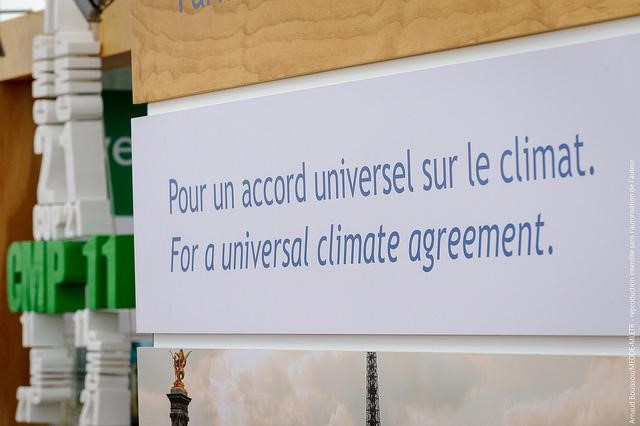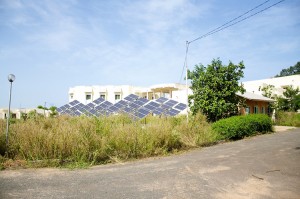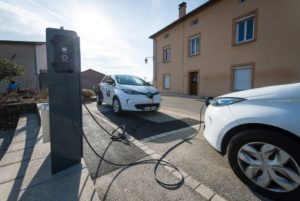La COP21 qui aura lieu en décembre prochain se déroule à un moment crucial de l’histoire de la lutte contre le climat : la prise de conscience de l’enjeu est maintenant largement partagée et les technologies de substitution des énergies fossiles, notamment les Smart Grids, ont fait d’incroyables progrès. Des projets et des démarches Smart Grids sont même explicitement mentionnés dans les « contributions prévues déterminées au niveau national » (CPDN) de plusieurs États. Retour sur les engagements Smart Grids prévus dans l’accord en cours de négociation.
La Conférence sur le changement climatique[1] vise principalement à acter trois grands objectifs :
- Les engagements et les plans nationaux de réduction d’émissions de CO2 pour la période post 2020.
- Un accord unilatéral (encore en cours de négociation[2]) qui définira la trajectoire globale des émissions et les mécanismes de vérification et de révision. Ce qui comprend les rendez-vous intermédiaires qui permettront de résoudre les questions qui n’auront pas été résolues. Pour les 195 pays signataires, de nombreux consensus restent encore à trouver.
- Le financement du Fonds Vert. Ce Fonds a pour objectif de canaliser les financements des pays développés vers des projets d’adaptation et d’atténuation au changement climatique dans les pays en développement.
Un fonds vert et des technologies pour réduire les émissions de GES
Le but fixé par les États est de réussir à financer le Fonds à hauteur de 100 milliards de dollars par an d’ici à 2020. Fort de 10,2 milliards de promesses de dons, le fonds est désormais opérationnel et financera des projets dès 2016. Pour le Président de la République, « l’enjeu de la Conférence de Paris n’est pas simplement de fixer des normes, des contraintes, c’est aussi de faire un grand pari technologique et de ne pas avoir peur de partager la technologie. Si les pays ne sont pas convaincus qu’il y aura un nouveau cycle de développement grâce à des technologies que nous pouvons partager, ces pays ne s’engageront pas”. Ce fonds vert devrait financer des projets destinés à réduire les émissions de gaz à effet de serre des pays en développement (transports bas carbone, réductions d’émissions dans les bâtiments, gestion durable des terres et forêts) mais aussi de permettre aux Etats les plus fragiles de s’adapter au changement climatique (résilience renforcée des systèmes d’alimentation, d’eau, de santé, des infrastructures et des écosystèmes). Des projets Smart Grids sont également attendus de voir le jour dans ce cadre.
Les Smart Grids dans les « contributions prévues déterminées au niveau national »
Au 1er octobre, 146 pays (86 % des émissions mondiales) avaient rendu publics leurs engagements nationaux[3]. Ces engagements sont formalisés au travers de « contributions prévues déterminées au niveau national » (CNDP). Il s’agit d’un nouveau type d’instrument dans le cadre de la Convention-cadre des Nations Unies sur les Changements Climatiques[4] (CCNUCC). Il permet aux États de présenter, en amont de la conférence, les efforts nationaux envisagés dans le cadre de la lutte contre le dérèglement climatique. Chaque Etat y présente des éléments chiffrés (année de référence, période d’engagement), les méthodologies employées pour estimer les émissions de GES et un calendrier de mise en œuvre.
Alors que certains États se contentent d’énoncer des objectifs très généraux, comme les Etats-Unis et l’Union Européenne, d’autres, principalement les BRICS, décrivent, de manière parfois détaillée, les moyens qu’ils se donnent pour atteindre ces objectifs.
Le Brésil, par exemple, envisage la mise en œuvre de Smart Grids et l’installation de compteurs intelligents. La Barbade et le Cap Vert mentionnent dans leurs CPDN la réalisation de micro grids. Le Cameroun souhaite déployer des mini Smart Grids en zone rurale. Belize, pour sa part, se propose de « mettre à niveau son réseau et ses infrastructures électriques pour en faire un système énergétique plus intelligent, plus unifié et intégré ». L’Île Maurice affiche une « modernisation du réseau national d’électricité grâce à l’utilisation de technologies intelligentes, condition préalable pour accélérer l’adoption des énergies renouvelables ».
Le gouvernement indien revendique « l’un des plus importants programmes d’extension des capacités d’énergies renouvelables dans le monde. Entre 2002 et 2015, leur part été multipliée par six, passant de 2 % à 13 % ». Il mentionne la mise en place d’une National Smart Grid Mission « pour apporter de l’efficacité dans le réseau électrique », ainsi que la création de 100 Villes Intelligentes.
La Thaïlande signale l’existence d’un « plan directeur pour le développement des Smart Grids 2015 – 2036 » mais déplore un déficit de « compétences techniques de haut niveau et les capacités de coordination efficace » pour les mettre en œuvre.
Dans sa contribution (CPDN), le gouvernement chinois s’engage à atteindre le pic de ses émissions de CO2 autour de 2030 et à baisser les émissions de CO2 par unité du produit intérieur brut par rapport au niveau de 2005. A l’appui de ces objectifs, il décline toute une série de mesures, qui vont de la réforme du cadre législatif à la construction d’un Smart Grids national. La Chine aurait déjà dépensé 4,3 milliards de dollars dans les Smart Grids en 2013. Un effort qui devrait naturellement se renforcer pour répondre aux enjeux de décarbonisation de son économie et au respect de des objectifs fixés dans le cadre de l’accord de la COP21.
ITEMS International pour Think Smart Grids
Crédit photo : Flickr, Ciau en CC
[1] Ciau, Flickr en CC, lien
[2] Site de la 21e Conférence des parties de la Convention-cadre des Nations Unies sur les changements climatiques, lien
[3] Projet de texte du futur accord qui sera discuté lors de la COP21, lien
[4] Rapport de synthèse sur les contributions nationales (INDC) publié par la CCNUCC, lien
[5] Site de la Convention-cadre des Nations Unies pour le changement climatique, lien






